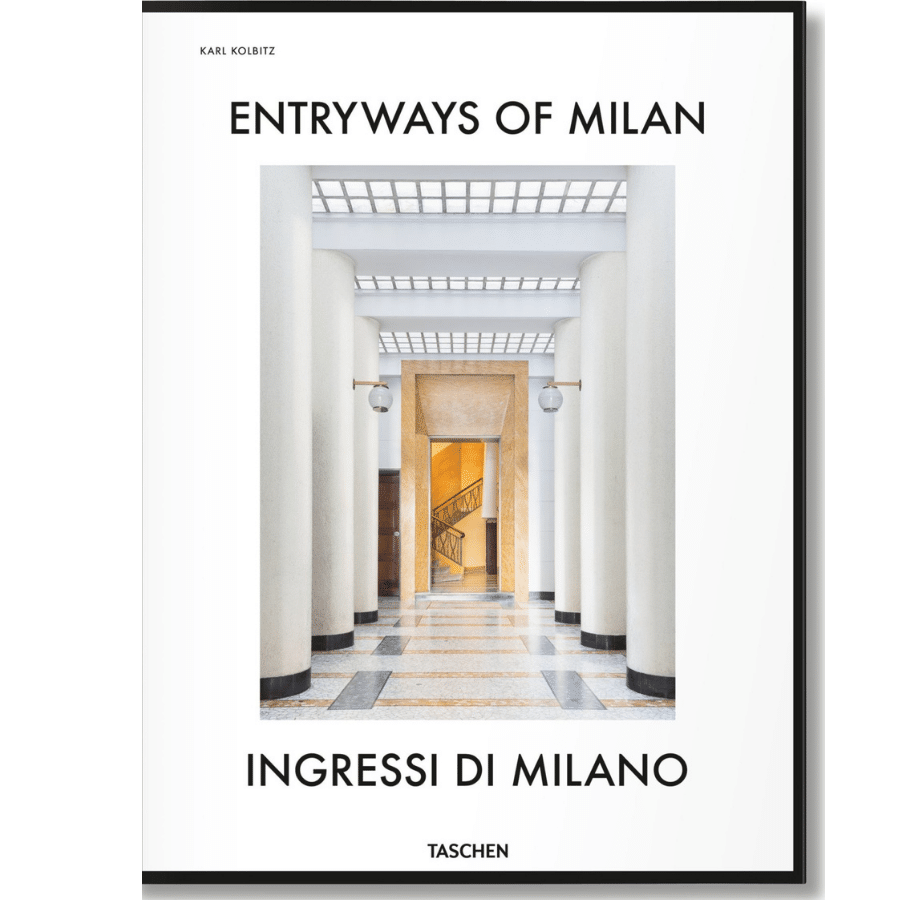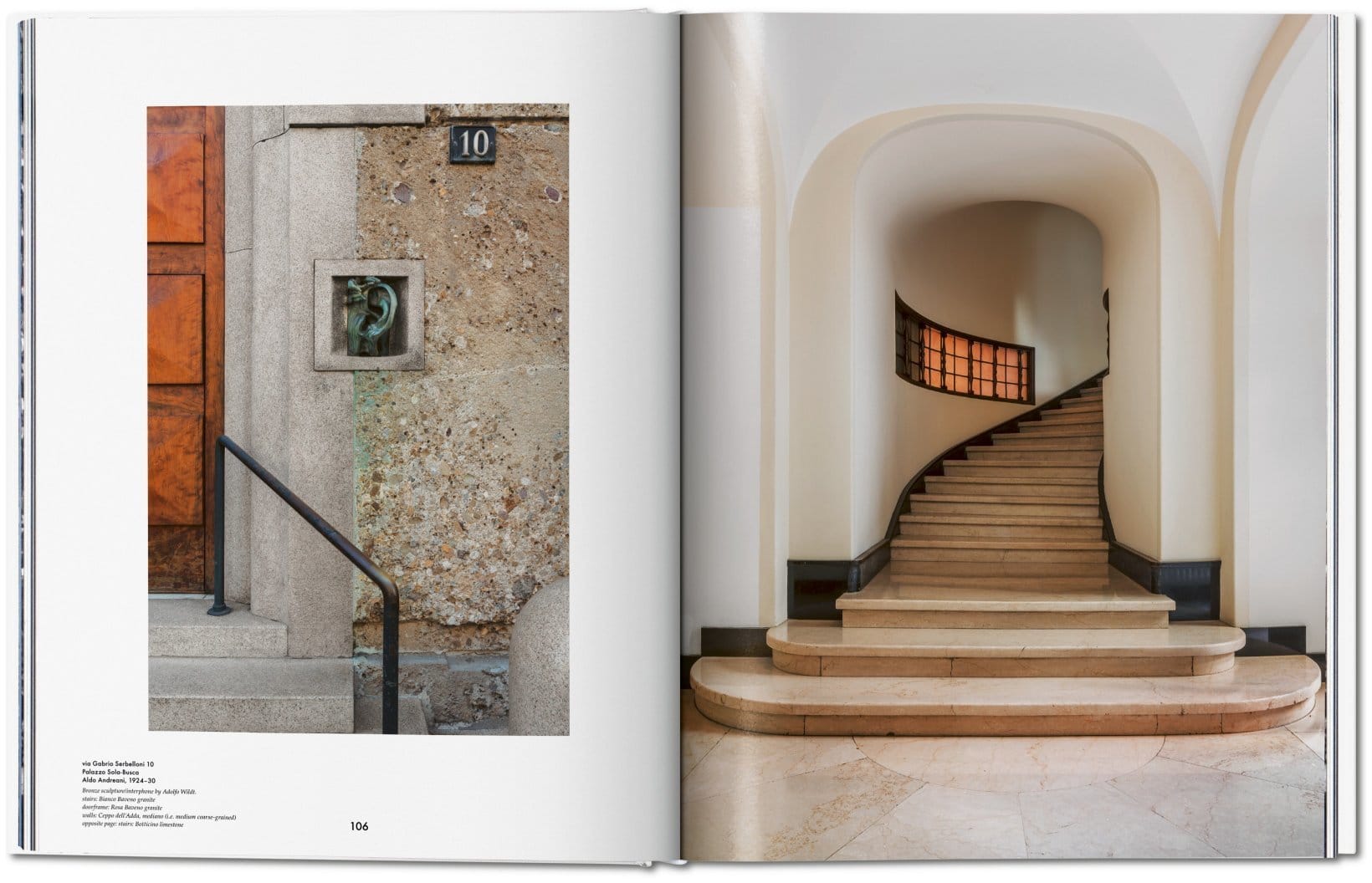Entryways Of Milan 9783836564182
€ 50
REQUEST PRODUCT
First impressions count, especially in Milano. In this unprecedented photographic journey, editor Karl Kolbitz curates 144 of the finest Milanese entrance halls from 1920 to 1970. Sumptuous in diversity and splendor, the volume features some of Milan’s most famous architects, from Gio Ponti to Piero Portaluppi, and showcases the city’s design DNA across high to low architecture.
| REFERENCE | 9783836564182 |
|---|---|
| Brand | |
| Type | |
| Weight | 3.30 kg |
| Dimensions | 26 × 34 cm |
| Condition | |
| Model |
Bella Figura
Milan’s sumptuous modernist hallways
The collection spans buildings from 1920 to 1970 and showcases the work of some of the city’s most illustrious architects and designers, including Giovanni Muzio, Gio Ponti, Piero Portaluppi, and Luigi Caccia Dominioni, as well as non-pedigreed architecture of equal impact and interest. The photographs for the publication were exclusively created by Delfino Sisto Legnani, Paola Pansini, and Matthew Billings, each evoking the entryways with individual sensibility and a stylistic interplay of detail shots—such as stones, door handles, and handrails—with larger architectural views.
The images are accompanied by outstanding written contributions from Penny Sparke, Fabrizio Ballabio, Lisa Hockemeyer, Daniel Sherer, Brian Kish, and Grazia Signori, together bringing a wealth of architecture, design, and natural stone expertise to guide the reader through the applied materials and fittings as well as the art-historical and social implications of each of the ingressi. As much an architectural city guide as an aesthetic study, the book provides the exact address and an annotated Milan map for all featured entryways, as well as the architect name and date of construction.
In the well-documented realm of 20th-century Italian design, Kolbitz has stepped over the threshold and delivered a brand new area of inquiry in Milanese modernism. With the rigor of its multifaceted research, poised photography, and breadth of its featured hallways, this is an invigorating new reference work and an inside look at the city’s design DNA across high to low architecture.















